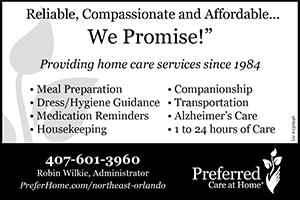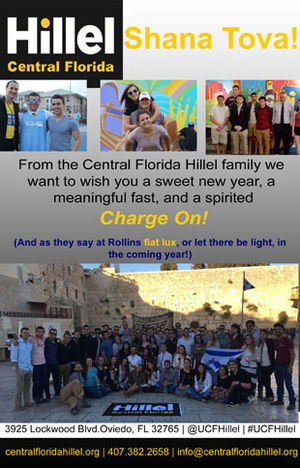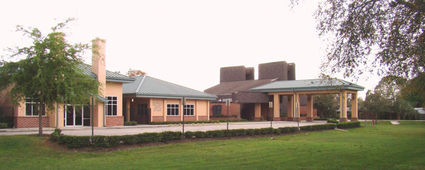Task Force makes CRJ accessible to all
August 17, 2018
The Torah teaches, "You shall not curse a deaf person. You shall not place a stumbling block before a blind person." (Leviticus 19-15)
Imagine coming to services, but not being able to participate because you use a wheel chair, and the sanctuary is not accessible? Or if your child or grandchild has some special need that keeps him or her from attending Sunday school, young peoples' services, or from preparing for b'nei mitzvah.
In hopes of avoiding situations like this, the Congregation of Reform Judaism has launched an ambitious new inclusion initiative. It is aimed at removing all barriers to physical access to the campus, as well as any impediments to participation of people with psychological, emotional and intellectual challenges. It also includes outreach to the wider disability community.
The CRJ task force is made up almost entirely of people with disabilities, or immediate family members of those who do. This complies with the national advocacy slogan: "Nothing About Us Without Us!"
Why a task force? Most houses of worship are not covered by the Americans with Disabilities Act.
"It's important for people in the community to know there is a place to enjoy services and activities and to be part of a religious family should they choose," said inclusion task force member Marsha Freeman, professor at Barry University School of Law. "CRJ wants to make families and children with special needs welcome and comfortable in a temple setting, including being able to participate in a relaxed environment."
For another task force member, David Bottomley, a disability activist who has used a wheel chair for more than 25 years, inclusion means, "acceptance with the limitations that I have. It gives me the opportunity to learn and educate others about differently-abled people.
"This Task Force is dedicated to the concept that CRJ should be accessible to all as well as provide opportunities for inclusion for all," said Zena Sulkes, a veteran Jewish educator and activist, both locally and nationally. "We seek to create an exemplary environment that can include all participating in worship, education, and social activities."
These issues, Sulkes said, should include accessibility throughout and around the building complex, from parking to all programming planned within the temple, and sponsored by the congregation.

All students in CRJ's education programming are entitled to appropriate accommodations, planned and led by appropriately trained staff. In CRJ's Hebrew Help Resource Room, Sulkes tutors students with special needs in Hebrew reading. Programs like these are consistent with CRJ's goals, said the congregation's director of education, Dr. Sheryl Sacharoff. "We pledge to add whatever supports for all students who are in need," she said.
Task force members acknowledge that they have set a high bar for themselves and for CRJ. So they have begun in modest increments, including some suggested measures that entail no cost, and may seem small. For example, opening a side entrance for upcoming High Holiday services will shorten the walk from the handicapped parking lot.
One of the first orders of business has been to develop a statement of accessibility to be reprinted in all worship service bulletins; Chai, the congregation's newsletter; and new membership and social event packets.

It reads: "Congregation of Reform Judaism strives to project a warm and welcoming environment, physically and emotionally, for all activities, including religious services, school functions and special events. Having a safe, accessible and inclusive environment for congregants and guests is a major part of this undertaking, and allows CRJ to play a prominent role in the religious and familial events in our community. We welcome your help in identifying areas of concern re accessibility or inclusion of any kind."
In addition to determining what is needed for the CRJ campus and new programs, the task force is also preparing an inventory of services and accommodations already available, which congregants may not be aware of. These include an audio loop in the main sanctuary that enables those with hearing challenges to follow the service. Because CRJ is on one floor, it is largely barrier-free, except for door thresholds, and there are accessible bathrooms. On the task force's wish list: new, automatic doors.

Congregations of all faiths around the country have found that, by making accommodations ostensibly for people with disabilities, they also have unforeseen benefits in making their facilities accessible for young parents with children in strollers and grandparents. And congregants who may be able-bodied now may need assistance in hearing, seeing and getting around as they age.

Every Jew has a right to a welcoming and accepting congregation where their spiritual needs can be met," said Sacharoff. "Similarly, each Jewish student, as our teachings say, has the right to an education. Here at CRJ's Steinmetz Family School of Chai, nothing has been seen more clearly than in our Hebrew Help class. Within this structure, we have been able to more adeptly prepare youth who have different learning needs to feel more confident in their abilities. Hearing the positive feedback from both students and their parents has demonstrated that we are heading in the right direction. From our classrooms to our congregation as a whole, CRJ is meeting the diverse needs of its congregants."
Worship may also require some accommodations. Using darker, large type fonts, with sharper contrast, on overhead screens, can make the difference in the quality of the services. But there are other needs as well, some that don't readily come to mind for able-bodied people.
"In addition to worship, rituals and customs must also be made accessible to all," said CRJ Senior Rabbi Steven Engel. "For example, we do not use wine, but grape juice so those who are in recovery can participate in the blessing. At Bar and Bat Mitzvahs we sometimes pass the Torah through the family not from the raised bima, although it has a ramp, but from the floor so that those differently abled, very often great grandparents, can participate in this important tradition. Weddings have been performed including other languages and even signed to accommodate."
The task force is being guided by advice from Virginia Thornburgh, a national authority on religion and disability. "As you address architectural barriers, remember the more challenging barriers are barriers of attitude," said Thornburgh, editor and co-author of "That All May Worship: An Interfaith Welcome to People With Disabilities," published by National Organization on Disability.
Rabbi Engel agrees: "Judaism teaches us that 'A human being mints many coins from the same mold, and they are all identical. But the holy one, blessed by God, strikes us all from the mold of the first human and each one of us is unique.'" (Mishnah Sanhedrin 4:5). "This means that we were Divinely and intentionally created differently-abled which should be seen as a strength for us to learn from one another, to assist each other, and to create a world where we celebrate this in each and every one of God's creation."
CJR Task Force member Mark I. Pinsky is author of "Amazing Gifts: Stories of Faith, Disability, and Inclusion.




Reader Comments(0)